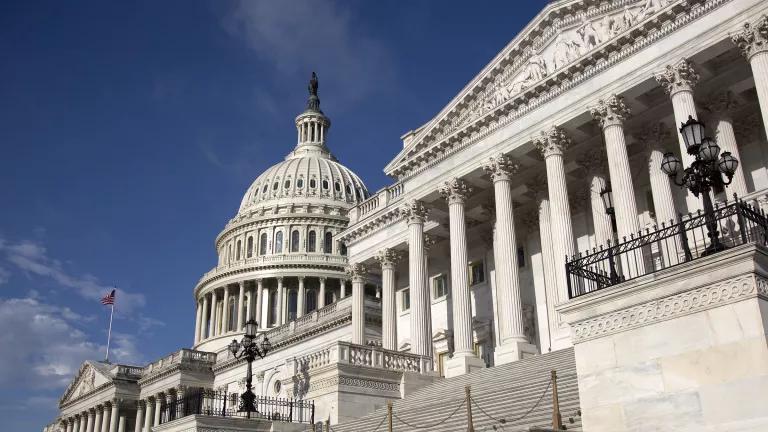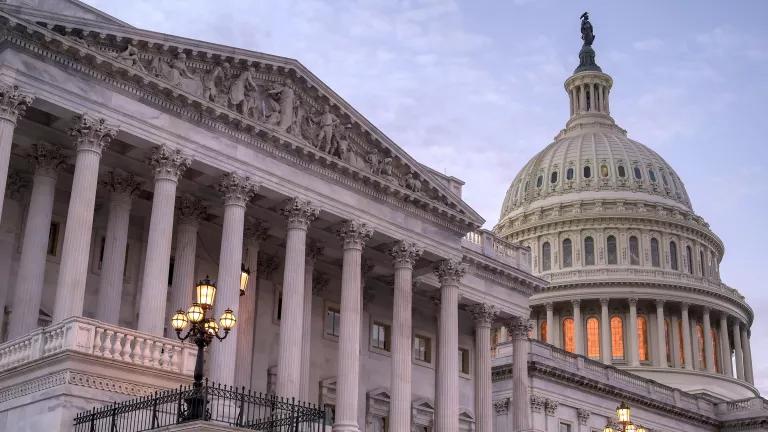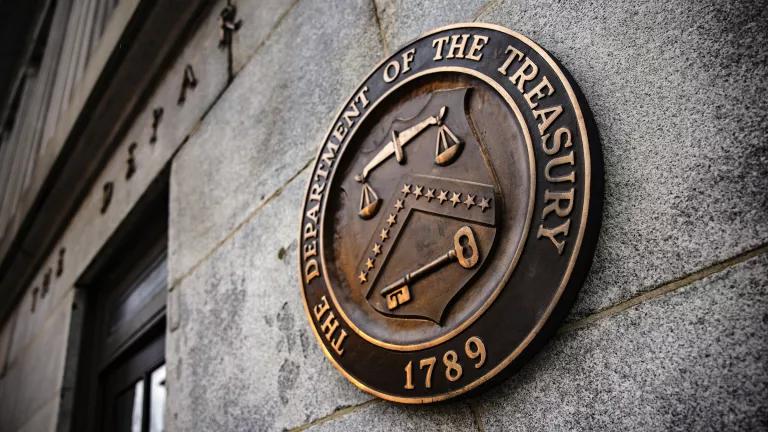Biden Seeks Bipartisan Support for an Equitable Recovery
With the American Jobs Plan, the president is inviting congressional leaders to find common ground—and presenting them with a golden opportunity.

Construction workers guide a crane as they work on the Sixth Street Viaduct replacement project in Los Angeles.
With the American Jobs Plan, the president is inviting congressional leaders to find common ground—and presenting them with a golden opportunity.
President Biden is hosting Republican and Democratic congressional leaders at the White House on Wednesday, hoping to find common ground around a plan to drive economic recovery through strategic investments in the country’s future.
Topping the agenda: congressional support for the American Jobs Plan, Biden’s grand vision to create jobs while helping to improve communities, protect public health, advance racial equity, and fight climate change.
In his bid for bipartisan agreement around these urgent national priorities, Biden is offering Republicans a golden opportunity to embrace popular policies that can help lay the foundation, literally in many cases, for a generation of American prosperity.
Here’s hoping they rally around the call—for the good of people all across the country.
If there’s one thing that should unite us, as a nation, it’s the opportunity to invest in a stronger and more equitable economy, and never more so than now.
The coronavirus pandemic triggered the worst economic crisis since the Great Depression. More than a year after the pandemic first struck, too many businesses are struggling to regain their footing and not enough people have found good jobs.
At the same time, we’ve not kept up, for decades, with the public investment required to maintain our aging highways, bridges, and ports. And we’ve yet to make the commitment we need to shift away from the fossil fuels that are driving climate change and move toward cleaner, smarter ways to power our future.
Biden’s American Jobs Plan provides a comprehensive, eight-year strategy to address those failings and to seize the historic opportunity to get our economy back on its feet and create a brighter future for our people. More than two-thirds of the country—68 percent—supports the plan.
We’re talking here about needed investments to:
- replace outdated lead pipes that currently endanger families in as many as 10 million homes nationwide, and upgrade wastewater, stormwater, and drinking water infrastructure;
- cap hundreds of thousands of abandoned oil and gas wells, many of which are leaking dangerous pollution across the country;
- rebuild and repair some 20,000 miles of highways and roads, to improve the safety and efficiency of commerce and travel;
- make more than two million homes and commercial buildings more efficient, comfortable, and resilient;
- invest in research and innovation to make our manufacturing sector more competitive;
- grow the domestic supply chain we’re counting on to make sure more of the clean energy technology of the future is made here in the United States;
- build half a million charging stations for electric vehicles;
- reconnect communities of color divided by the misguided highway projects of the past;
- modernize the national electricity grid and storage system, to make it more resilient in the face of raging wildfires, storms, and floods;
- and train workers in regions historically reliant on fossil fuels for careers in clean energy and other more promising sectors.
To make sure the jobs and other benefits of this investment help the people who need it the most, Biden is insisting that 40 percent of these benefits be directed to the low-income communities and people of color on the frontlines of environmental hazard and harm. And, as the White House and Congress work together on this plan, they must ensure it advances justice and economic equity for all our people, including workers who want to join a union.
All of this is key to also helping the country wean itself from fossil fuels by investing in energy efficiency; electric vehicles, public transit, and walkable communities; clean power from the wind and sun; and a flexible, resilient power grid. That’s investment we need to meet Biden’s pledge to cut the carbon pollution and other greenhouse gases that are driving the climate crisis by 50 to 52 percent by 2030, compared to 2005 levels, as the science tells us we must.
We’re nearly a quarter of the way there. We can go the distance, a new NRDC analysis shows, chiefly by cutting emissions from our cars, trucks, and dirty power plants—and creating millions of good-paying jobs in the process. That’s what the American Jobs Plan is all about.
What’s needed now is congressional support for Biden’s forward-leaning vision.
Wednesday’s bipartisan leadership meeting is more than a moment to test the waters. For weeks now, members of Biden’s cabinet have joined other senior White House officials in the most extensive bipartisan outreach campaign in years, including calls or meetings with some 120 Republican members of Congress or key aides.
Wednesday is Biden’s chance to evaluate the potential for real progress. And, while he’s been careful not to set any deadline, it’s important for the American Jobs Plan to move forward.
The country needs the investment. Our people need to get back to work. And we need to speed the equitable and just shift to clean energy if we’re going to avert the worst impacts of the climate crisis.




